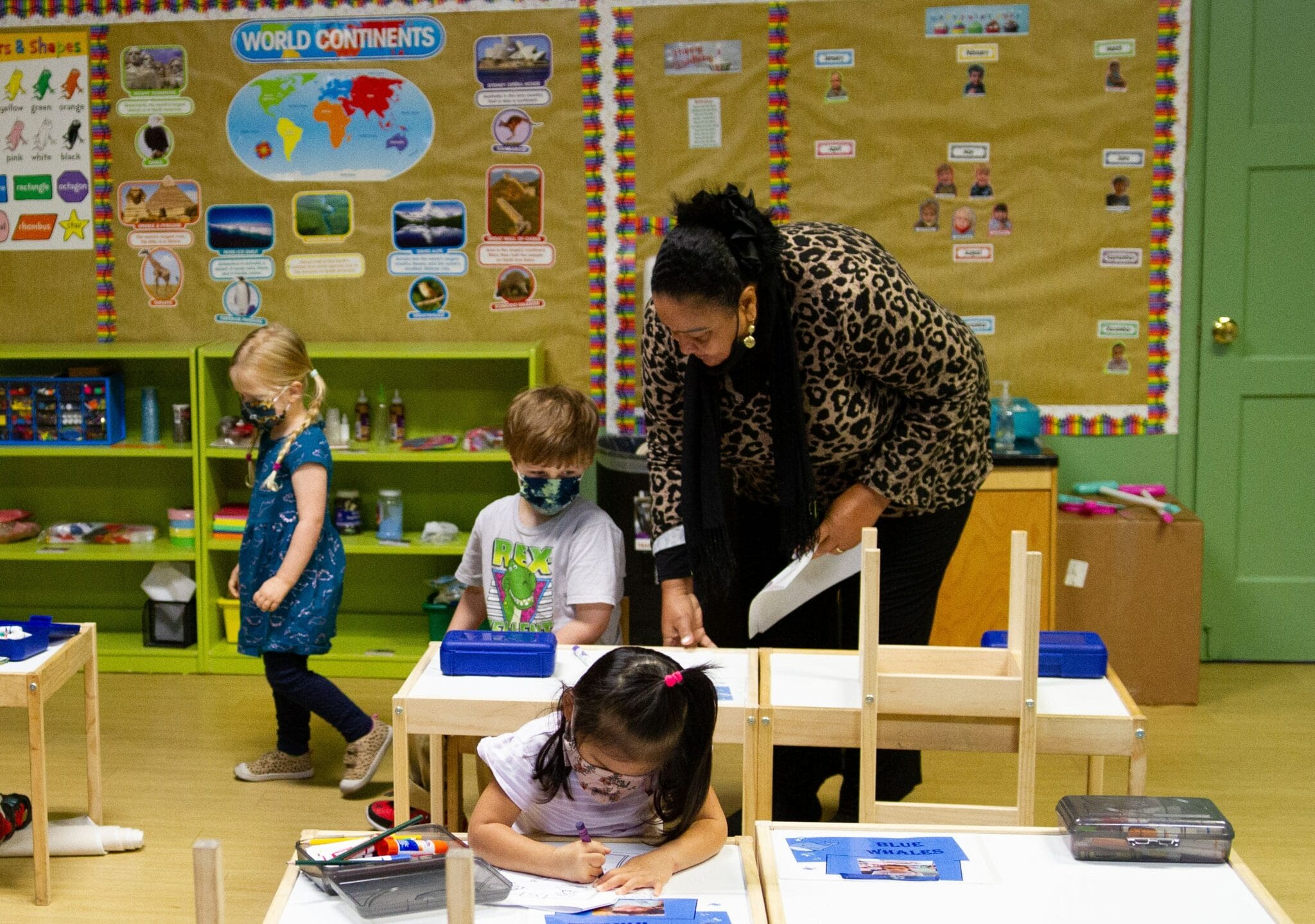Covid-19 brought California’s already-ailing child care system to its knees. If you work in child care or are a parent, you are intimately familiar with this reality. If you are making budget and policy decisions in California, you may have missed the urgency of the crisis and the workers at the center of it all.
Even Gov. Gavin Newsom, who promoted a transitional kindergarten plan and expansion of child care slots in his State of the State address, has neglected this crisis.
Increasing child care spaces only works if there are child care teachers to fill them.
We’ve lost 8,600 child care jobs and at least 7,200 child care spaces since the onset of the pandemic. Where are the educators going? Even McDonald’s and Walmart pay more than the average California child care wage of $16.43 an hour, with benefits to boot. These unsustainably low wages create a domino effect of rampant economic distress, turnover, and child care shortages, driving parents — especially mothers — to leave the labor force because they can’t find child care or can’t afford it. Covid-19 underscored how critical child care is to a healthy economy. This is a direct result of underinvestment and policy failure.
A year ago, President Joe Biden signed the American Rescue Plan Act, earmarking funds for child care. California’s share was more than $3.7 billion. My colleagues and I at the Center for the Study of Child Care Employment called on states to prioritize use of relief funds for direct cash payments to early childhood educators. Today, at least 28 states are shoring up educator recruitment and retention with relief funds, prioritizing higher worker salaries and benefits or stipends.
Here in the Golden State? No specific payments have been directed to child care staff. For bold leadership, people are looking elsewhere. Minnesota, for example, requires that 70% of American Rescue Plan grants to child care programs be used for staff compensation or financial relief payments. New Mexico prioritized stipend payments to all child care workers before the American Rescue Plan even existed.
The governor’s 2022 budget proposal neglects the ongoing impact of the pandemic on child care and the severe economic distress of this workforce. The budget has no pandemic recovery funds for child care workers, and their basic needs are deprioritized. Instead, the proposal implies that the people need to be improved, not the conditions in which they work. For example, the education budget emphasizes training, not wages, as a strategy for improvement, yet more than half of center-based teachers and nearly a third of family child care providers already have a bachelor’s degree. More training does not put food on the table and will not stop educators from walking away for a living wage elsewhere.
Gov. Gavin Newsom recently said of California, “No other place offers opportunity to so many from such diverse backgrounds.” So how does leaving behind a workforce composed mostly of women of color, who are among the lowest-paid workers in California, square with the state’s vision of itself?
It’s not too late for the governor and Legislature to champion well-being and compensation for all early educators. Some leaders are speaking out, and we hope this is a trend. Recently, Assembly Majority Leader Eloise Gómez Reyes highlighted the need for fair compensation and Assemblymember Kevin McCarty raised the need to improve rates and pay living wages, asking, “What more needs to be done?”
The most immediate step is to allocate relief funds for child care staff as direct cash payments or wage increases. From there, we need bold action that treats the whole of early care and education — not just 4-year-olds — as a public good and respects the women who hold up this system.
Repeated polls show voters have the will to invest in child care and teachers’ wages. The question is, do our governor and Legislature?



